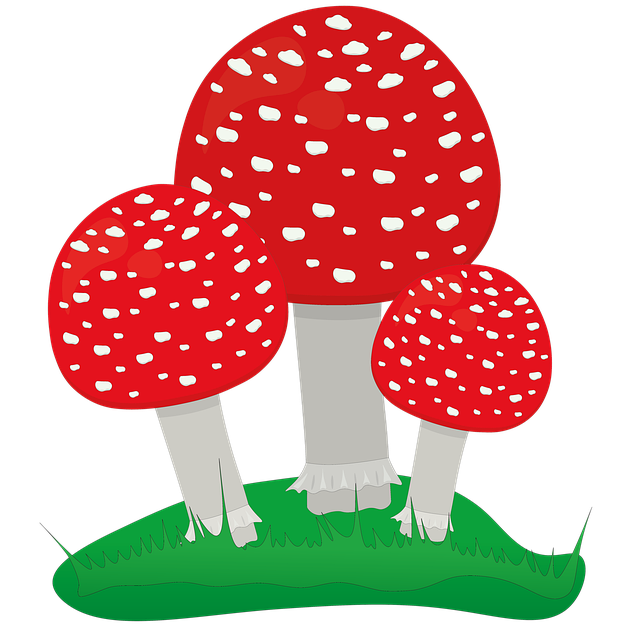The article provides a comprehensive overview of the legal complexities, safety precautions, and potential therapeutic effects associated with microdosing Amanita Muscaria, commonly known as fly agaric. It highlights that due to its psychoactive properties, the legal status of Amanita Muscaria varies by jurisdiction, necessitating careful adherence to local regulations. Safety is paramount, and users are advised to accurately identify the species during foraging, ensure proper dosing through a cyclical protocol, and consult with professionals for guidance. Personal experiences suggest cognitive enhancements and mood elevations from microdosing, but scientific research is needed to understand how individual differences affect its pharmacokinetics and pharmacodynamics. Future studies aim to explore the substance's interactions with neurotransmitters and its potential therapeutic applications for conditions like depression and anxiety. Ethical considerations are crucial in this research, with an emphasis on informed consent, legal compliance, and the protection of cultural rights associated with indigenous knowledge and practices concerning Amanita Muscaria. The article underscores the importance of responsible and ethical advancement in microdosing research to ensure participant well-being and the safe exploration of its therapeutic potential.
Exploring the intersection of traditional practices and contemporary wellness trends, this article delves into the emergence of Amanita Muscaria as a subject of microdosing interest. Known colloquially as “fly agaric,” Amanita Muscaria edible has a storied history steeped in cultural significance, which we will unravel. We will also examine the scientific rationale behind its psychoactive effects and navigate the legal landscape surrounding its use. This exploration aims to provide a comprehensive guide on safely preparing Amanita Muscaria for consumption, setting dosage parameters, and adhering to microdosing protocols. Through personal narratives, we gain insights into the experiences of individuals who have integrated this fungal compound into their wellness routines. Finally, we will contemplate the ethical implications and future research trajectories for Amanita Muscaria use in microdosing regimens.
Unveiling the Potential of Amanita Muscaria in Microdosing Regimens
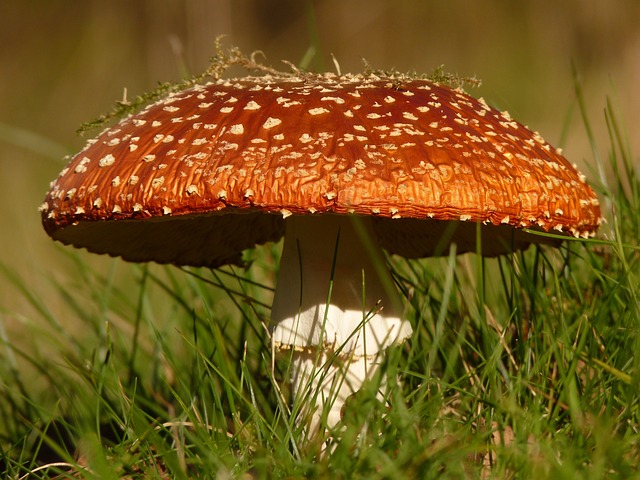
Amanita Muscaria, commonly known as the fly agaric, has long been a subject of fascination and intrigue due to its psychoactive properties. In recent years, this naturally occurring edible mushroom has gained attention within the microdosing community for its potential cognitive and mood-enhancing benefits. Microdosing involves consuming subtherapeutic doses of psychoactive compounds; in the case of Amanita Muscaria, it’s the presence of muscimol and ibotenic acid that are believed to contribute to these effects. Proponents suggest that microdosing Amanita Muscaria can lead to increased creativity, improved focus, and a heightened sense of well-being without impairing one’s daily functioning.
The scientific community is increasingly investigating the therapeutic potential of Amanita Muscaria in microdosing regimens. Research indicates that the active compounds may interact with serotonin receptors in the brain, which could underpin its reported benefits for mood and cognition. While human studies are still relatively scarce, animal models have shown promise in terms of mood enhancement and anti-inflammatory effects. It’s important to approach the use of Amanita Muscaria with caution, as improper dosing can lead to adverse effects. Therefore, individuals interested in exploring this mushroom for microdosing should prioritize safety, seek informed guidance, and stay informed on the evolving research surrounding its efficacy and safety profile.
Historical Context and Cultural Significance of Amanita Muscaria
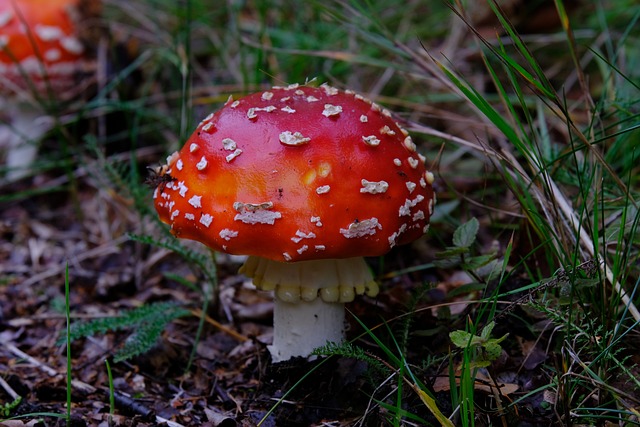
The Amanita Muscaria mushroom, often referred to as the “Fly Agaric,” has a rich and storied history that spans numerous cultures and epochs. This distinctive fungi, recognized by its vibrant red cap dotted with white spots, has been a subject of fascination and intrigue for centuries. Artifacts depicting this mushroom have been found in prehistoric contexts, suggesting its use may extend back into ancient times. In iconic folklores such as those from Siberia and Finland, the Amanita Muscaria edible has been woven into tales and traditions where it often represents a portal to other worlds or a source of wisdom and insight. Its cultural significance extends beyond mythology; in certain communities, it holds a sacred place in spiritual ceremonies and rites, symbolizing transformation and connection with the divine or the spirit world. The Amanita Muscaria edible’s psychoactive properties have been both revered and feared, influencing its portrayal across cultures from ancient to modern times. Today, its cultural significance continues to be explored within the context of microdosing, where its potential for enhancing cognitive function and creative thinking is being studied and experienced by individuals seeking natural ways to augment their mental capabilities. As research into its effects evolves, so too does the understanding of this mushroom’s role in both historical traditions and contemporary wellness practices.
The Science Behind Amanita Muscaria's Psychoactive Properties

The Amanita Muscaria, commonly known as the fly agaric, is a species of psychoactive mushroom with a rich history of use in various cultures. Its psychoactive properties stem from the presence of several alkaloids, including ibotenic acid and muscimol. Scientific studies have shown that these compounds interact with the brain’s neurotransmitter receptors, particularly the NMDA receptor, which is involved in cognitive processes and the modulation of synaptic plasticity—a key mechanism for learning and memory. When ingested in microdoses, Amanita Muscaria has been reported to induce mild psychoactive effects characterized by euphoria, increased energy, and visual changes, without impairing the user’s daily functioning. Researchers hypothesize that these subtle alterations in perception and mood could contribute to therapeutic benefits, including potential improvements in mood disorders and cognitive enhancement.
The pharmacological action of Amanita Muscaria is complex due to its multifaceted alkaloid profile. Ibotenic acid, for instance, has been found to have neuroprotective and nootropic effects, which may further contribute to the cognitive benefits observed in some users. On the other hand, muscimol’s action is more pronounced as a psychoactive agent. The balance of these compounds, along with others present in the mushroom, likely plays a significant role in determining its overall effects. While scientific research into Amanita Muscaria’s psychoactive properties is still in its early stages, preliminary findings suggest that this ancient substance holds promise for both therapeutic and cognitive applications when used in microdoses. As such, understanding the science behind its effects is crucial for developing safe and effective protocols for its use.
Legal Considerations for Incorporating Amanita Muscaria into Microdosing Practices

The integration of Amanita Muscaria, commonly known as the fly agaric, into microdosing regimens presents a unique set of legal considerations. Amanita Muscaria edible products have gained attention for their potential therapeutic benefits when consumed in small, controlled doses. However, it is imperative to navigate these practices within the confines of local and national laws, as the status of Amanita Muscaria varies across jurisdictions. In some regions, this psychoactive mushroom is legally permitted for certain uses, including microdosing, provided it is prepared and distributed according to strict regulatory frameworks. Manufacturers considering the inclusion of Amanita Muscaria in their product lines must first ascertain the legal landscape in their respective areas, ensuring compliance with all applicable laws, including those pertaining to pharmaceutical substances and dietary supplements. This due diligence involves staying informed about ongoing legislative changes that could impact the production, sale, and consumption of Amanita Muscaria edible products for microdosing purposes. Consumers, too, must be aware of the legal implications in their region to partake in such practices responsibly and safely. Engaging with knowledgeable legal counsel is advisable for both producers and users to ensure adherence to regulations and to mitigate any legal risks associated with incorporating Amanita Muscaria into microdosing protocols.
Preparing Amanita Muscaria Safely for Edible Consumption
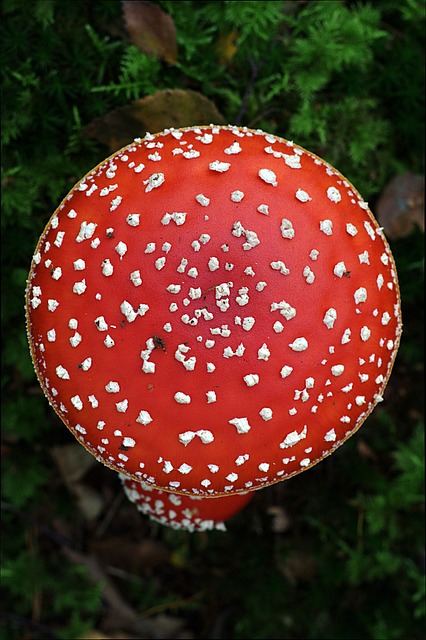
When considering the consumption of Amanita Muscaria, commonly known as the fly agaric, for its psychoactive properties in a microdosing regimen, safety and precision are paramount. The Amanita Muscaria edible preparation requires meticulous attention to detail, from foraging to processing. It is crucial to identify the species accurately, as many other Amanita varieties can be toxic or even lethal. Once identified, the mushrooms should be carefully cleaned to remove any dirt or potential contaminants. The next step involves drying the caps and stems thoroughly to concentrate their active compounds, muscimol and ibotenic acid, which can then be further processed into a tea, tincture, or another edible form. Drying also helps to reduce the risk of ingesting potentially harmful microorganisms.
The preparation process for Amanita Muscaria in an edible context should always be done with expertise and caution. It is advisable to use a reliable and reputable source for the mushrooms, as their hallucinogenic effects can be unpredictable and their toxicity significant if not handled correctly. Once dried, the mushrooms can be ground into a fine powder, which can then be encapsulated or mixed with other edible substances to create microdoses. This method allows for precise dosing, which is essential for a controlled and safe microdosing experience. It is important to note that while some individuals report benefits from microdosing Amanita Muscaria, it remains a subject of ongoing research and should be approached with care and respect for its potency. Always prioritize safety protocols and legal considerations when considering the use of this psychoactive substance.
Guidance on Dosage and Microdosing Protocols with Amanita Muscaria

When considering microdosing with Amanita Muscaria, it is imperative to approach the practice with caution and informed guidance. Microdosing involves consuming a sub-perceptual dose of a psychoactive substance, in this case, Amanita Muscaria, with the aim of promoting cognitive enhancement, mood improvement, and heightened creativity. The dosage for microdosing Amanita Muscaria should be carefully calculated to ensure that the effects are minimal yet perceptible. Typically, a microdose is approximately one-tenth of a regular dose, which can vary widely among individuals. It is crucial to begin with a very low dose and gradually increase it as tolerance builds, always adhering to safety protocols. The Amanita Muscaria edible form should be sourced from reputable suppliers, as the exact dosage can depend on factors such as the size of the mushroom cap and the potency of the specific strain. Safety measures must include a clear understanding of the legal status of Amanita Muscaria in one’s jurisdiction, as well as medical advice if microdosing is being considered for therapeutic purposes.
Microdosing protocols with Amanita Muscaria require strict adherence to timing and dosage consistency. The protocol typically involves ingesting the microdose every three to four days, rather than daily, to prevent the development of a tolerance. This cyclical approach is designed to maintain the efficacy of the treatment over time. It is also essential to consider set and setting, ensuring that the environment and one’s mental state are conducive to a positive experience. Documenting one’s experiences can be helpful in understanding personal responses to the substance, which can inform dosage adjustments. Always prioritize safety by starting with the smallest effective dose and seeking guidance from healthcare professionals or experienced practitioners when embarking on a microdosing regimen with Amanita Muscaria.
Personal Accounts: The Experiences of Individuals Using Amanita Muscaria in Microdoses

The phenomenon of microdosing with Amanita Muscaria, a psychedelic substance commonly known as the Fly Agaric, has garnered attention for its potential cognitive and mood benefits. Personal accounts from individuals experimenting with Amanita Muscaria in microdoses often describe experiences that range from subtle enhancements to profound transformations. These anecdotes provide valuable insights into the subjective effects of this classic psychedelic, which, despite its historical use in various cultures, remains a topic of scientific investigation due to its psychoactive properties. Users report feelings of increased creativity, heightened focus, and improved mood, alongside enhanced problem-solving abilities and a sense of spiritual connection. It’s important to approach these personal narratives with caution, as individual experiences can vary widely due to factors like dosage, set, and setting. Moreover, the legal status of Amanita Muscaria varies by region, underscoring the necessity for discerning individuals to navigate this territory with care and informed consent. As research continues to evolve, these personal accounts contribute to a growing body of evidence that may one day inform the clinical use of psychedelics like Amanita Muscaria in therapeutic settings.
Future Research Directions and Ethical Considerations for Amanita Muscaria Use
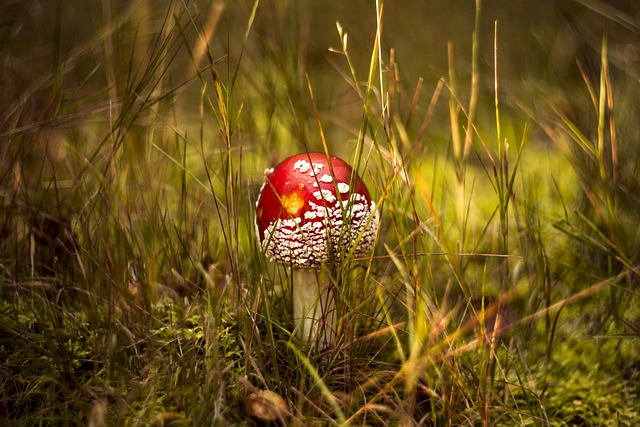
As research into the therapeutic potential of Amanita Muscaria, commonly known as the Fly Agaric, expands, future studies are poised to delve into the pharmacokinetics and pharmacodynamics of microdosing this psychoactive substance. The focus will likely shift towards understanding how individual differences in metabolism and physiology influence the effects of Amanita Muscaria edible components. This will necessitate longitudinal trials with diverse participant cohorts to evaluate safety, efficacy, and optimal dosing protocols. Furthermore, research into the mechanisms by which Amanita Muscaria interacts with neurotransmitters could reveal new insights into its therapeutic applications, potentially aiding in conditions like depression and anxiety.
Ethical considerations are paramount when examining the use of Amanita Muscaria. Researchers must navigate the legal landscape, as the status of this psychedelic varies by jurisdiction. Ethical protocols ensuring informed consent, particularly regarding the potential risks associated with its psychoactive properties, must be rigorously implemented. The potential for cognitive and perceptual changes due to Amanita Muscaria consumption underscores the need for ethical oversight to protect participants’ well-being. Additionally, the preservation of indigenous knowledge and practices involving Amanita Muscaria must be respected, and research should prioritize collaboration with communities that have historically used this substance. Ensuring the rights and cultural integrity of these communities are protected will be a critical aspect of responsible and ethical research in this area.
